It’s cool. In the darkness of space.
We made it to the end of the week, a big week for space news.
So with that, enjoy this illustration from xkcd about the James Webb Space Telescope.
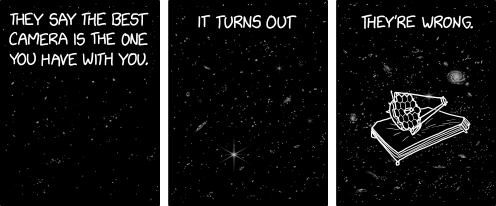
Credit for the piece goes to Randall Munroe.
And by out there I mean 1150 light years away. One of the five amazing images out of the first day’s announcement by the James Webb Space Telescope (JWST) team was not a sexy photo of a nebula or a look back 13.5 billion years in time. Instead it was a plot of the amount of infrared light was blocked as exoplanet WASP-96b, a hot Jupiter, transited in front of its sun. A hot Jupiter is a gas giant roughly the size of Jupiter that orbits its sun so closely—often closer than Mercury does our Sun—its year takes mere days. WASP-96b is about half the mass of Jupiter and a year takes a little over three Earth days. Hot indeed.
The JWST means not just to take those images we saw, but to also capture data about the light passing through planetary atmospheres, just like WASP-96b. And showing the world Tuesday just how that works was a brilliant idea. What they shared was this graphic.
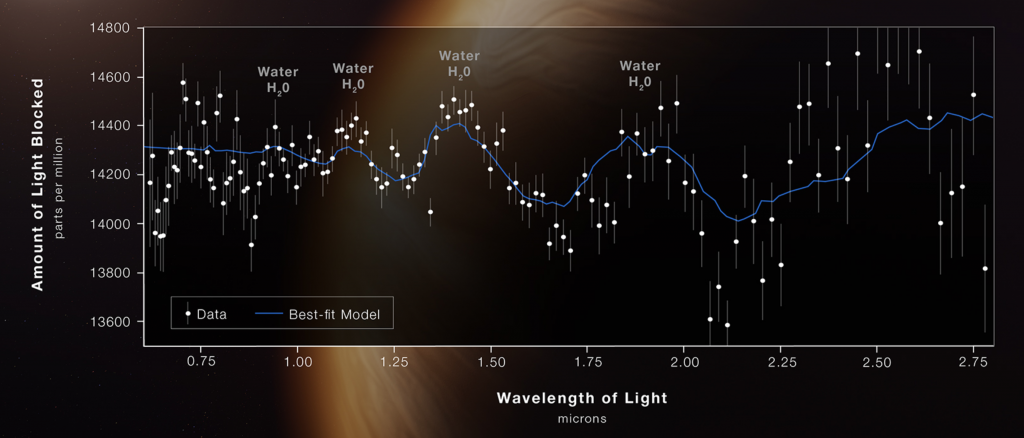
The original post explains the science behind it, but in short we see telltale signs of water vapor in the atmosphere. Remember that the planet is far too hit for liquid water to exist. But because the peaks and troughs were not as pronounced as expected, scientists can conclude that there are clouds and haze in the atmosphere. It did not detect any significant signs of oxygen, carbon dioxide, or methane, all of which would be noticeable if present as we expect in future exoplanets to be studied.
But later that day, the BBC published an article summarising the releases, but included a different version of the above graphic. Though the other four photos were unchanged. The BBC presented us with this.
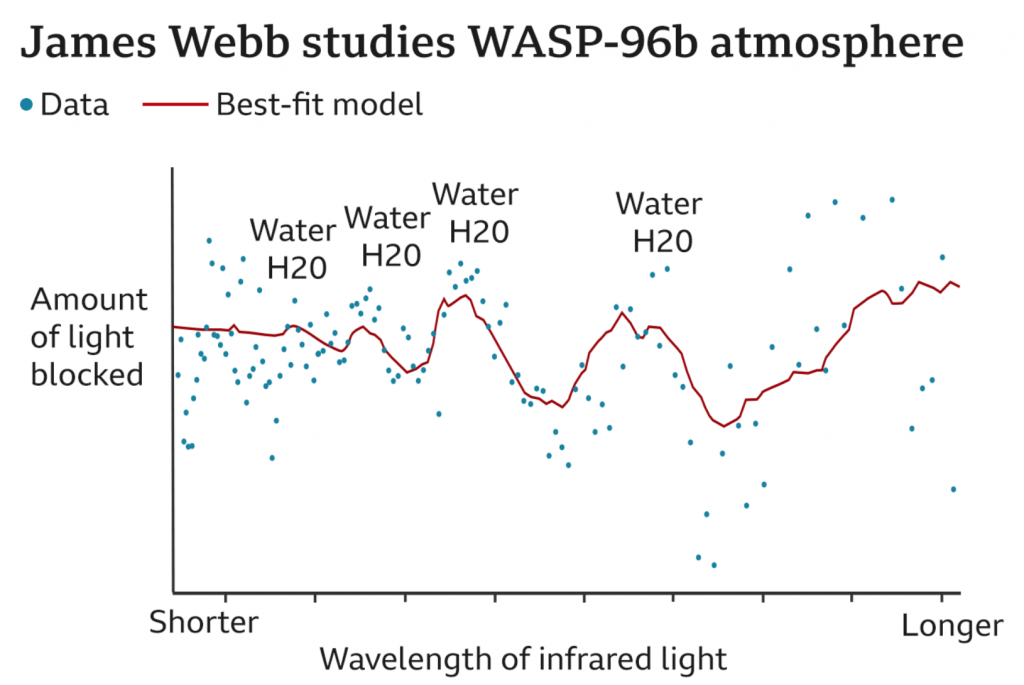
The most notable difference is the background. What was a giant illustration of a planet and then a semi-transparent chart background atop that on which the graphic sat is here replaced by a simple white background. Off the bat this chart is easier to read.
But then here we also lose some data clarity. Note on the original how we have axis markers for the wavelengths of light and the parts per million of light blocked. All are absent here. Instead the BBC opted to only put “Shorter” and “Longer” on the wavelength axis. I would submit that there was no real need to remove those labels, but that they could have been added to with these new ones. The new labels certainly explain the numbers to an audience that may not be as scientifically literate as perhaps the JWST’s audience was or was thought to be. There is certainly a value to simplifying and distilling things to a level at which your audience can understand. But there’s also a value in presenting more complex data, issues, and ideas in an attempt to educate and elevate your audience. In other words, instead of always trying to play to the lowest common denominator, it sometimes is worth it to lose a few in the audience if you ultimately increase the level of said denominator overall.
The other notable difference is that the data is presented without what I assume to be plots of the range of observations with their respective medians. You can see this in the original by how every wavelength has a line and a dot sitting in the middle of that line. In other words, over the 6+ hours the planet was observed, at each wavelength a certain amount of light was blocked. The average middle point over that whole time period is the dot. Then a line of best fit “connects” the dots to show the composition of the light streaming though that steamy atmosphere.
Again, I can understand the desire to remove the ranges and keep the median, but I also think that there is little harm in showing both. Though, the first graphic could like have used an explanation of what was shown, as I’m only assuming what we have and I could be way off. You can show more things and raise the level of the denominator, but you can only do so if you explain what your audience is looking at.
Overall both graphics are nice and capture not just the particular makeup of this one exoplanet’s atmosphere, but more broadly the potential power of the JWST and its impact on astronomy.
Credit for the original goes to the NASA, ESA, CSA, and STScI graphics teams.
Credit for the BBC version goes to the BBC graphics department.
Yesterday I received a question about where the new James Webb Space Telescope is located. Is it in orbit of the Earth, like Hubble? Is it out in deep space?
The answer is no, not really. Now I spent this morning trying to illustrate the answer to that question myself. However, it’s taking me too long. So we’re going to reference this great illustration from Scientific American.
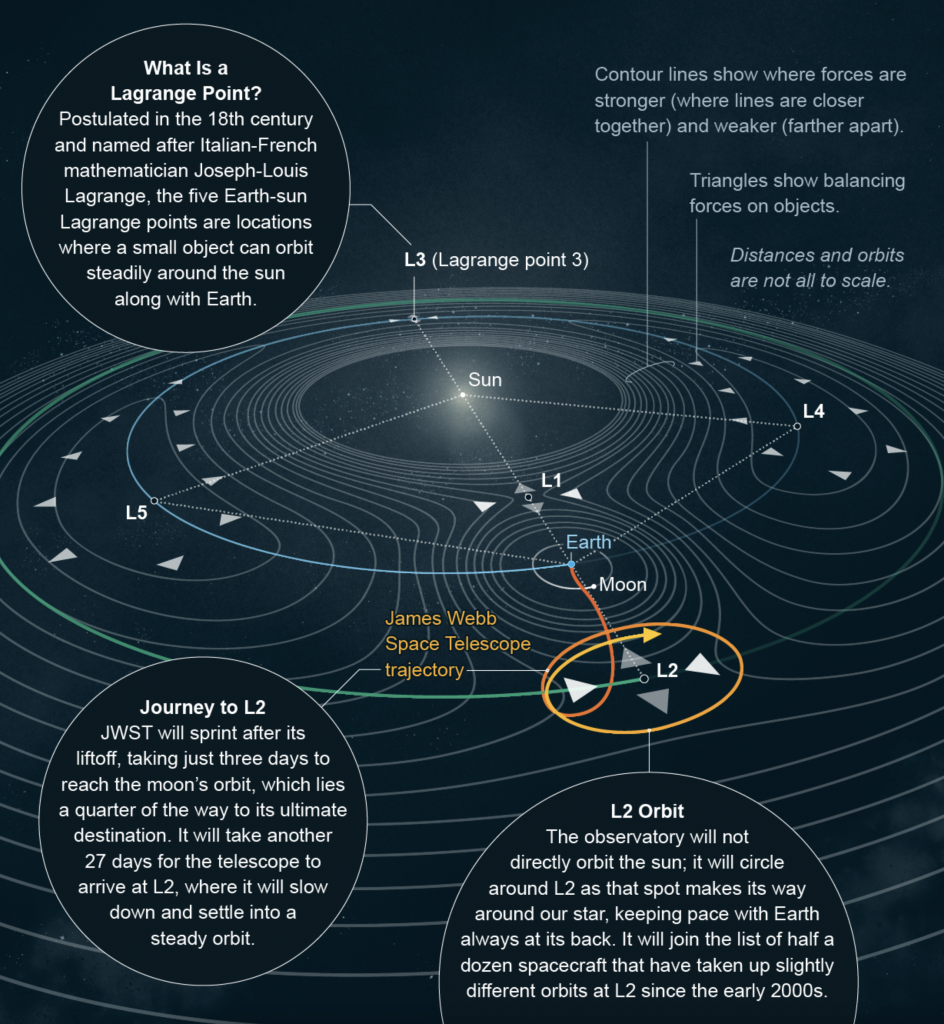
James Webb orbits around a point called the L2 Lagrange point, which sits in a line with Earth and the Sun. The telescope points out and away from the sun whilst the sun shield keeps the sunlight from warming the spacecraft while solar panels collect said light and power the spacecraft.
So if any of my other readers had a similar question, hopefully this goes some ways to answering the question.
Credit for the piece goes to Michael Twombly.
Happy Friday, everyone.
At the beginning of the week, we looked at the launch and deployment of the new James Webb telescope. If you recall, one of the key elements of the satellite’s design is its sunshield. As the name says, it shields the satellite from the sun, thus keeping the equipment super cold, which is necessary to operate in the range of infrared.
But, as xkcd points out, that’s not actually the real reason for the sunshield.
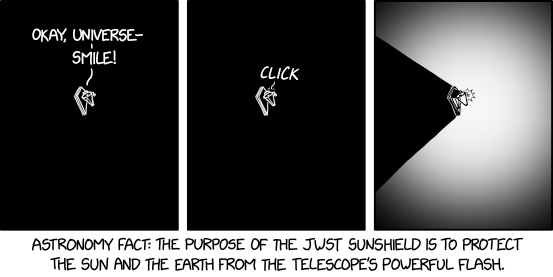
Credit for the piece goes to Randall Munroe.
We’re back after a nice holiday break. And one of the most fascinating things to happen was the successful—and seemingly easy, more on that in a bit—launch of the James Webb space telescope. The James Webb was developed by NASA with contributions from both the European Space Agency (ESA) and the Canadian Space Agency (CSA). Whilst it did launch behind schedule and at a price tag of $10 billion, the James Webb is the most sophisticated and complex space telescope mankind has yet launched into space. It will look backwards into time to some of the earliest stars and galaxies in the universe. It will also look at the thousands of exoplanets we have discovered in the last three decades. The instruments aboard James Webb will be able to help us identify if any of these planets have water and other ingredients necessary for life as we know it. This could be one of the most monumental space missions yet.
But James Webb’s launch was far from guaranteed. As this great article from the BBC explains, the construction, assembly, launch, and deployment were all incredibly complicated. James Webb is expected to operate for ten years before its fuel, needed to keep the telescope cold, runs out. However, the seemingly easy launch and deployment means that it used less fuel than expected. Some early reports suggest that the telescope may have some additional time left in it now before the fuel runs dry.
I encourage you to read the article, because it explains the advantages of the telescope, how it works, and its deployment with several illustrations. There are five in particular, though I’ll share only two screenshots.
The most important is this, the key distinction between Hubble and James Webb. It shows how the two space telescopes will be operating in different parts of the electromagnetic spectrum.
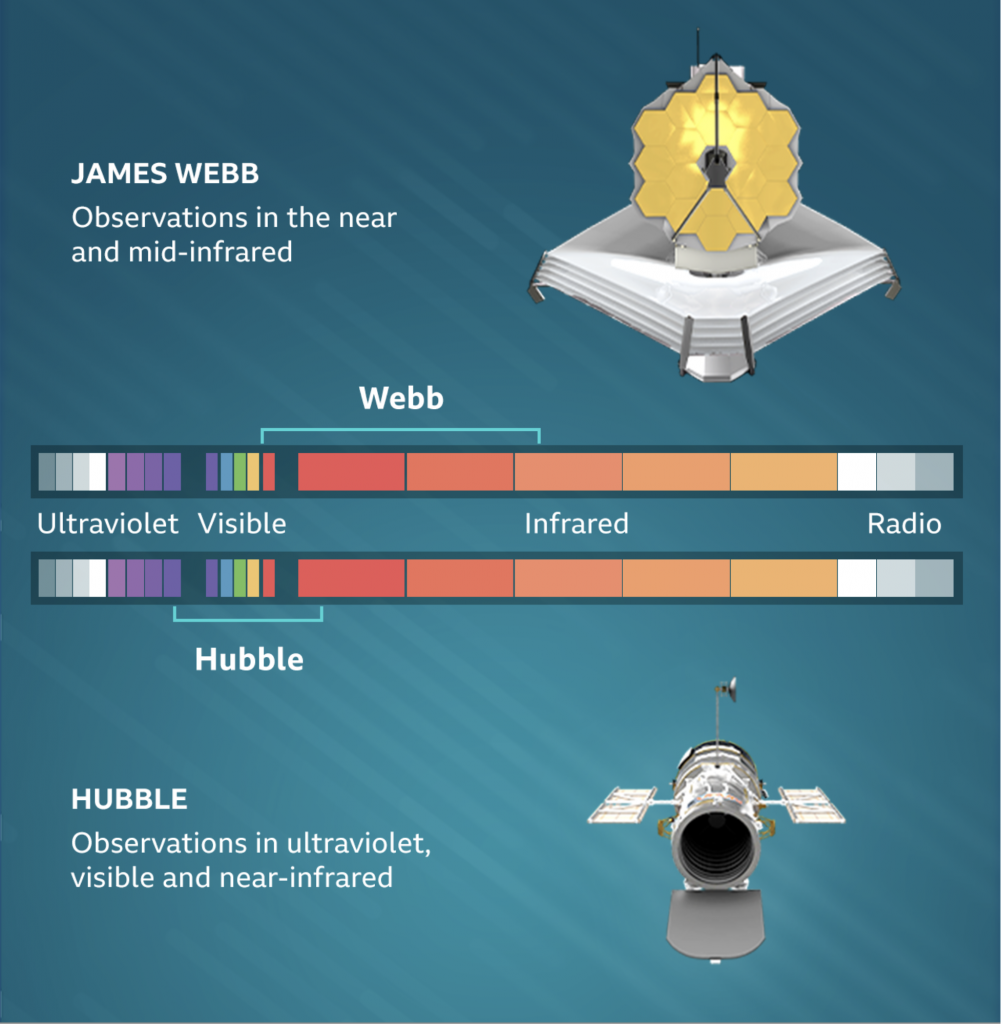
The graphic fakes the colours, because by definition we can only see the visible portions of the spectrum. Wavelengths get either too short or too long on either side of the visible spectrum—which differs for different species. I would actually really enjoy seeing how these two spectra stack up against other space observatories like Chandra (x-ray) and Spitzer (infrared).
Next we have the deployment, which finished just last week. The graphic summarises how complicated this process was—and how fraught with risk. But in the end it went off without any major hitch.
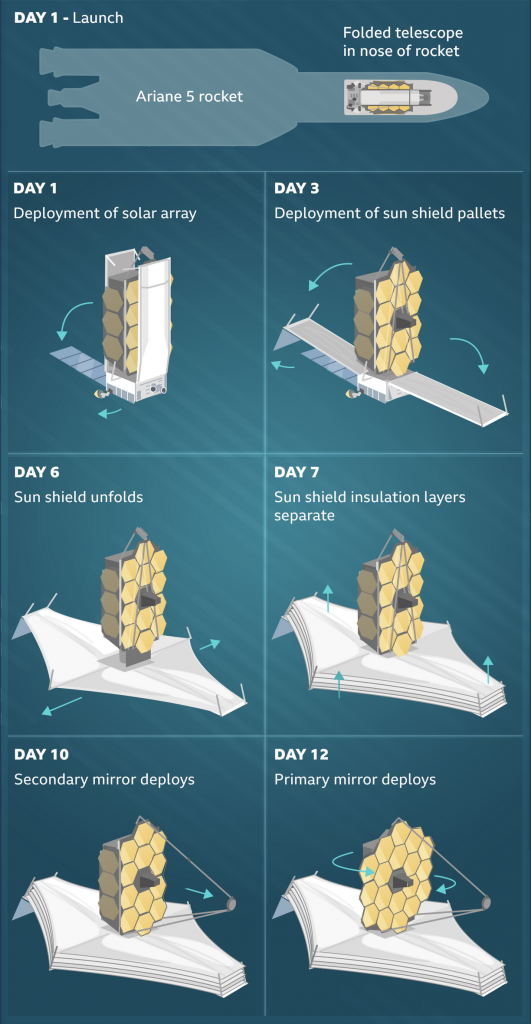
This uses a nice series of small multiples of illustrations. These simplified drawings show how the tightly packed telescope unfolds and then begins deploying its vital heat shield then its mirror.
The last thing to check out in the article is a slider showing the “before” and “after”. You have seen them before for things like flood or hurricane damages. Here, however, you can compare a photo in Hubble’s visible light to an existing infrared version of the same photo.
Of course, just because the telescope finished deploying its mirror last week doesn’t mean we get photos this week. The Baltimore-based team running the observatory will spend the next few months tuning everything up. But the goal is hopefully to have the first images from James Webb sometime in June.
And then we have the next ten years to hopefully start collecting data.
Credit for the piece goes to the BBC graphics team.